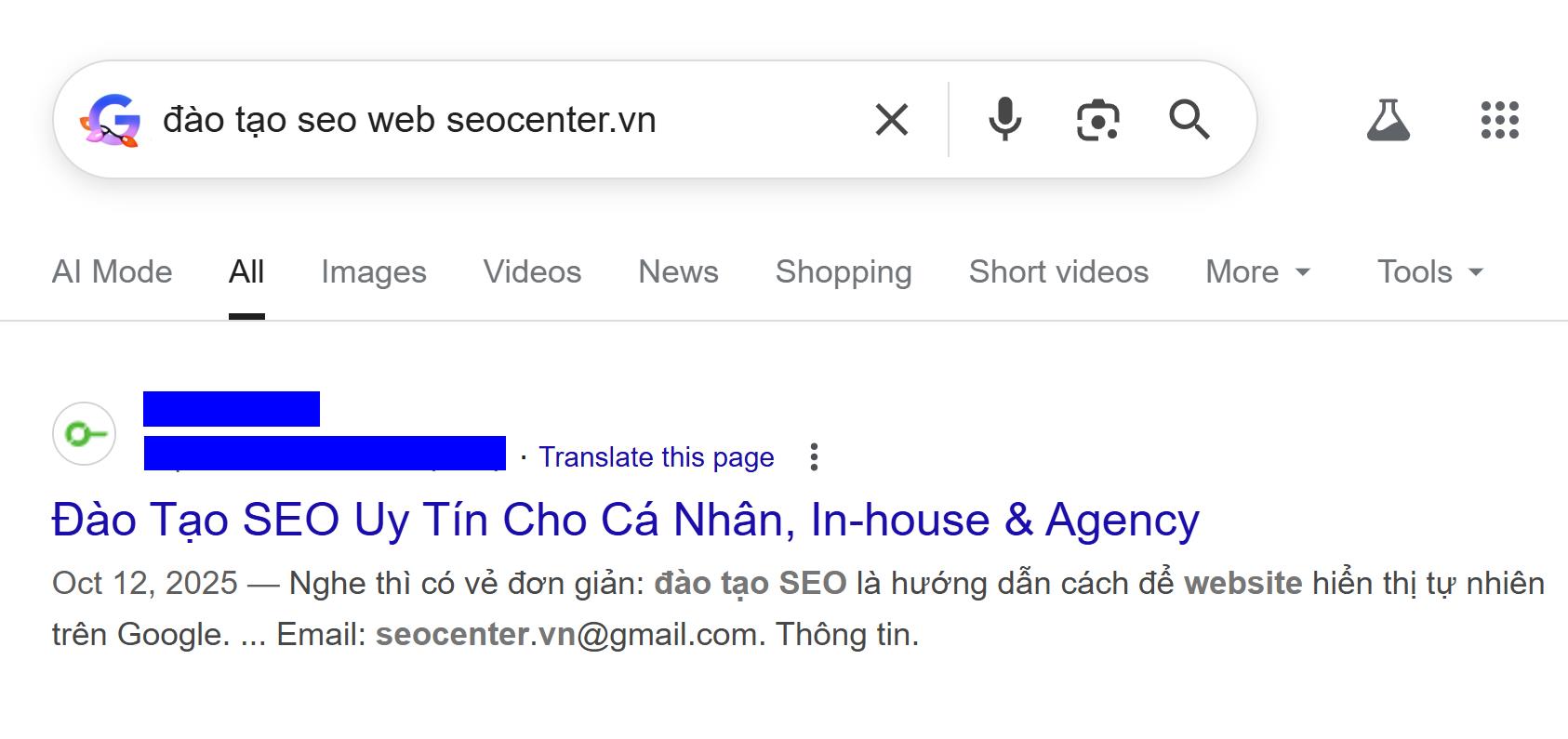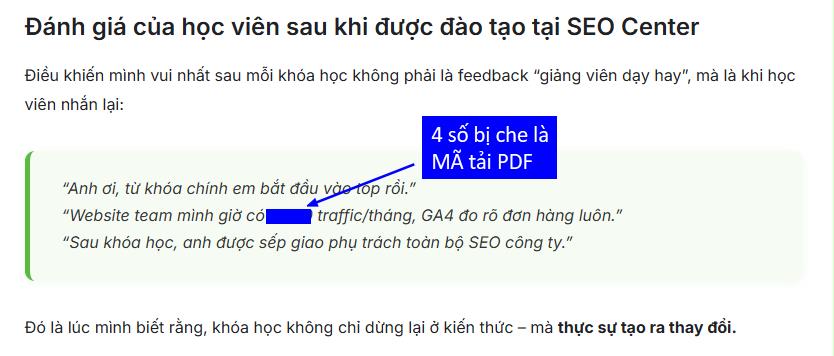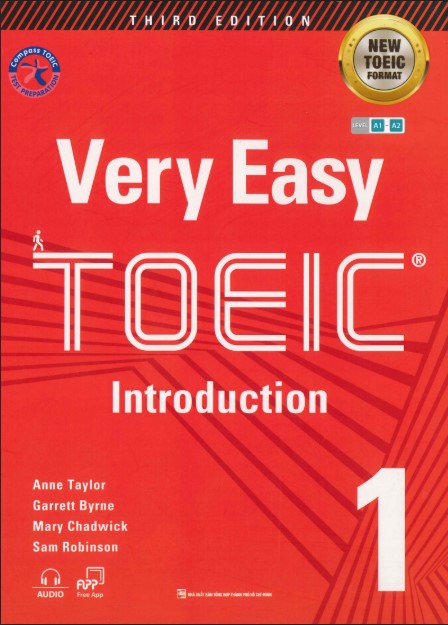
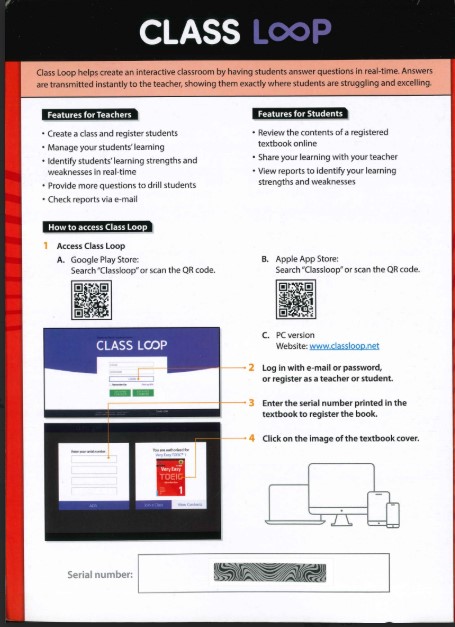
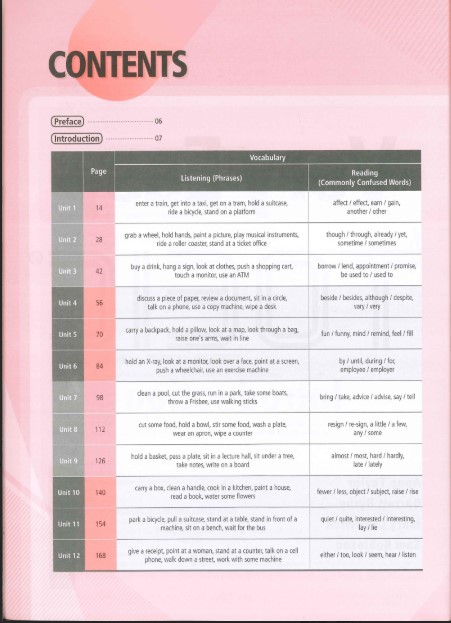
LISTENING TEST
In this section of the test, you will have the chance to show how well you understand spoken English. There are four parts to this section, with special directions for each part.
Part 1: Photographs
The directions for Part 1 of the TOEIC® appear on the test as follows:
Directions: For each question in this part, you will hear four statements about a picture in your test book. When you hear the statements, you must select the one statement that best describes what you see in the picture. Then find the number of the question on your answer sheet and mark your answer. The statements will not be printed in your test book and will be spoken only one time.
Look at the sample below:
[Image of a woman with a laptop]
Now listen to the four statements.
(A) The woman is using a musical instrument.
(B) The woman is typing on a laptop.
(C) The woman is playing a video game.
(D) The woman is sitting behind the table.
Sample Answer: [A] [B] [C] [D]
Statement (B), “The woman is typing on a laptop,” is the best description of the picture. Therefore, you should choose answer (B).
TIPS
- Preview the picture before the statements are read. Ask yourself, “Who?” “What?” “Where?”
- Focus on the meaning of the statements as a whole.
- Answer the question as quickly as possible. If you don’t know the answer, guess, and begin previewing the next picture.
TRICKS
- Incorrect answers may contain similar-sounding words.
Ex: The woman is typing on a laptop. - Incorrect answers may give wrong pronouns, numbers, and locations.
Ex: He is typing on a computer. / There are two computers. / The woman is sitting under the sofa. - Incorrect answers may include a correct word.
Ex: The computer is for sale. / The woman is sitting with some friends.
Part 2: Question-Response
The directions for Part 2 of the TOEIC® appear on the test as follows:
Directions: You will hear a question or statement and three responses spoken in English. They will not be printed in your test book and will be spoken only one time. Select the best response to the question or statement and mark the letter (A), (B), or (C) on your answer sheet.
Look at the sample below:
You will hear:
Good morning, John. How are you?
You will also hear:
(A) I’m fine, thank you.
(B) I’m in the living room.
(C) My name is John.
Sample Answer: [A] [B] [C]
The best response to the question “How are you?” is choice (A), “I’m fine, thank you.” Therefore, you should choose answer (A).
TIPS
- The first word of the question will help you know what kind of answer is required. What, where, who, why, how —- asks for information.
- Do, does, did, are, is, will, can —- usually needs a yes/no answers.
- Questions that contain “or” and require a choice never have yes/no answers.
“Did you stay home or go out last night?” “I went to a movie.” - Sometimes you will hear a statement, not a question. However, it still requires an answer.
“Thanks for dinner.” “You’re welcome.”
TRICKS
- Pay attention to words that sound the same (homonyms).
Ex: two, too, to - Look out for tag questions that are added to the end of statements.
Ex: “That movie was great, wasn’t it?” - Watch out for indirect answers. Sometimes the answer to a yes/no question does not include the words “yes” or “no.”
Ex: “Is there enough gas in the car?” “I just filled it yesterday.”
Part 3: Conversations
The directions for Part 3 of the TOEIC® appear on the test as follows:
Directions: You will hear some conversations between two or more people. You will be asked to answer three questions about what the speakers say in each conversation. Select the best response to each question and mark the letter (A), (B), (C), or (D) on your answer sheet. The conversations will not be printed in your test book and will be spoken only one time.
Conversations now may include three speakers.
Two new question types introduced:
- Implication question – Questions that refer to a direct quote from the conversation and question their meaning (often not literal).
- Graphic question – A simple graphic is provided in relation to the conversation, which must be used to answer a question.
TIPS
- Look at the question and graphic before the dialogue begins. If you have time, look at the answers as well.
- While you are listening to the dialogue, try to imagine where the speakers are.
- Read all the answers before making your choice.
TRICKS
- Watch out for answers that are true, but not related to the question. Don’t answer too quickly. Read all the options before you choose.
- Watch out for distracting numbers. These may include dates, times, and numbers of things or people. Preview the question to help you listen for the right information.
Part 4: Short Talks
The directions for Part 4 of the TOEIC® appear on the test as follows:
Directions: You will hear some talks given by a single speaker. You will be asked to answer three questions about what the speaker says in each talk. Select the best response to each question and mark the letter (A), (B), (C), or (D) on your answer sheet. The talks will not be printed in your test book and will be spoken only one time.
Two new question types introduced:
- Implication question – Questions that refer to a direct quote from the talk and question their meaning (often not literal).
- Graphic question – A simple graphic is provided in relation to the talk, which must be used to answer a question.
TIPS
- Listen also to the introduction preceding the talk. It will tell you the number of the questions related to the talk. It will also tell you what type of information you will hear (news report, weather report, advertisement, recorded message, announcement, etc.).
- Try to preview the questions and graphic before the talk begins. This will help you listen for the information required by the questions.
- Begin to answer the questions as soon as the talk is finished. Don’t wait for the speaker.
TRICKS
- Watch out for the same traps that are in Parts 1-3.
READING TEST
In this section of the test, you have a chance to show how well you understand written English. There are three parts to this section, with special directions for each part.
Part 5: Incomplete Sentences
The directions for Part 5 of the TOEIC® appear on the test as follows:
Directions: A word or phrase is missing in each of the sentences below. Four answer choices are given below each sentence. Select the best answer to complete the sentence. Then mark the letter (A), (B), (C), or (D) on your answer sheet.
Example:
Because the equipment is very delicate, it must be handled with ______.
(A) caring
(B) careful
(C) care
(D) carefully
Sample Answer: [A] [B] [C] [D]
The sentence should read, “Because the equipment is very delicate, it must be handled with care.” Therefore, you should choose answer (C).
TIPS
- Don’t worry about spelling. Incorrect spelling is never an option in TOEIC® answers.
- Look at the words on either side of the blank. They can give you clues about what the correct answer is.
- Read the whole sentence and understand the meaning before you answer.
- You should spend less than 30 seconds on each grammar and vocabulary item included in this part of the test to get a high score.
TRICKS
- Watch out for answers with the wrong word form.
Ex: drove, drives, driving - Watch out for words that use the same beginnings or endings.
Ex: return, retire, reuse - Watch out for commonly misused words.
Ex: affect / effect, lend / borrow
Part 6: Error Recognition or Text Completion
The directions for Part 6 of the TOEIC® appear on the test as follows:
Directions: Read the texts that follow. A word, phrase, or sentence is missing in parts of each text. Four answer choices for each question are given below the text. Select the best answer to complete the text. Then mark the letter (A), (B), (C), or (D) on your answer sheet.
Example:
As of June 15, employees will be ______ to wear full company uniforms whenever they are on company premises. This ______ to all employees who work in areas of the building accessible by members of the public. The full uniform consists of a white shirt, green pants, and the company tie for men.
1.
(A) requiring
(B) requirement
(C) required
(D) require
2.
(A) considers
(B) applies
(C) works
(D) implements
Sample Answer: 1. [A] [B] [C] [D] 2. [A] [B] [C] [D]
The sentences should read “As of June 15, employees will be required to wear full company uniforms whenever they are on company premises. This applies to all employees who work in areas of the building accessible by members of the public.” Therefore, you should choose answers (C) and (B).
New question type introduced:
Choose the sentence that best fits the text.
TIPS
- Remember that you are looking for the most appropriate word, phrase, or sentence to fill in the blank.
- Read the whole text, not just the words around the blank. Try to get the meaning of the text.
TRICKS
- Watch out for repetition and redundancy.
Ex: keep on continuing, finally at last. - Watch out for words that don’t belong.
Ex: The apples they are fresh. - Pay attention to word form and verb tenses.
Ex: nice / nicely, had gone / has gone

